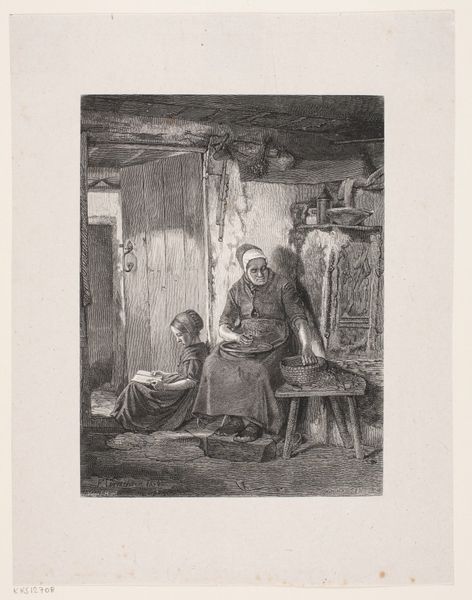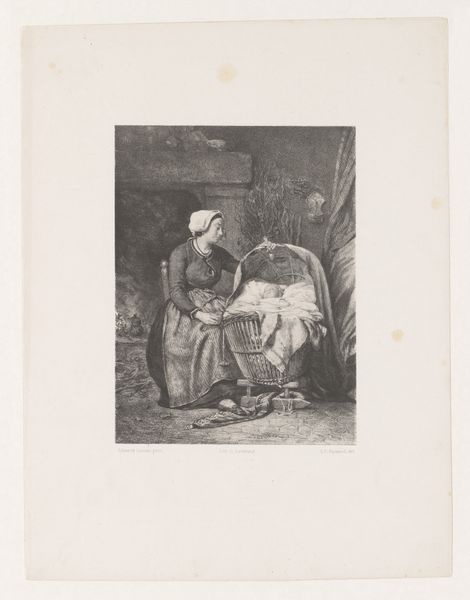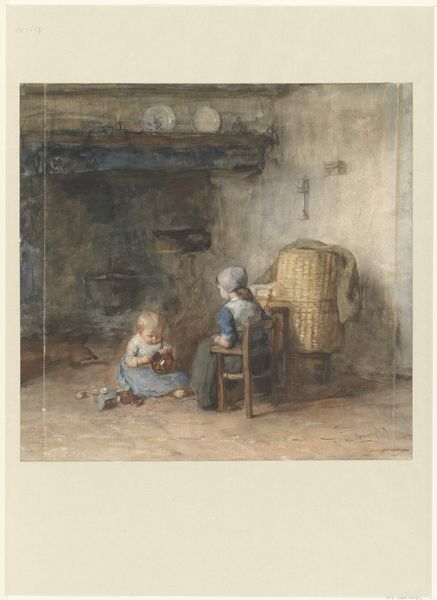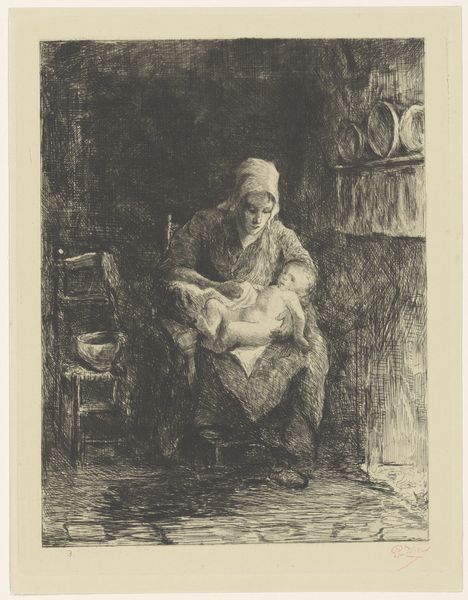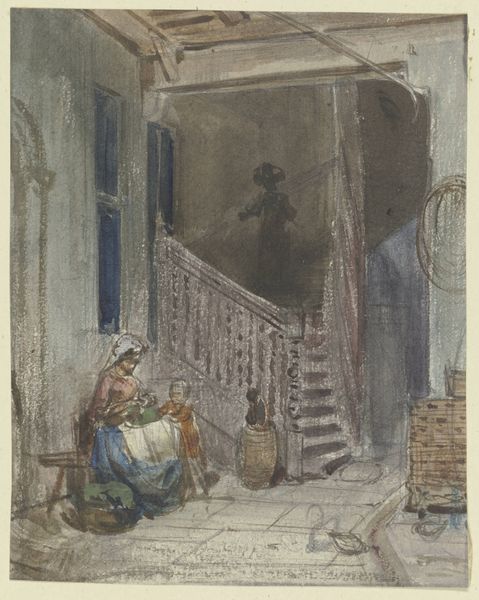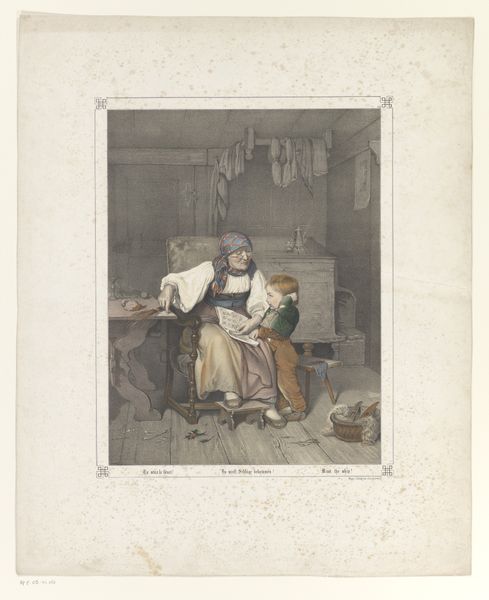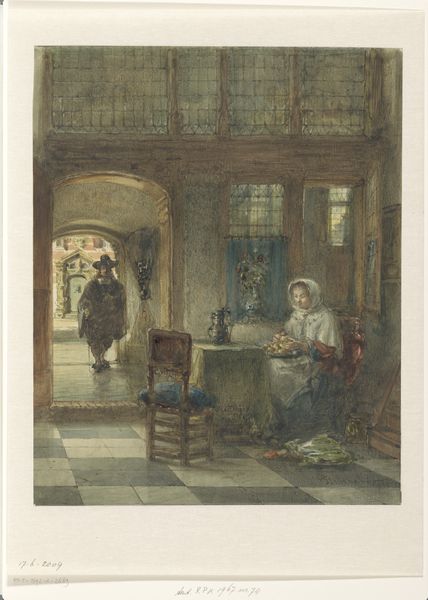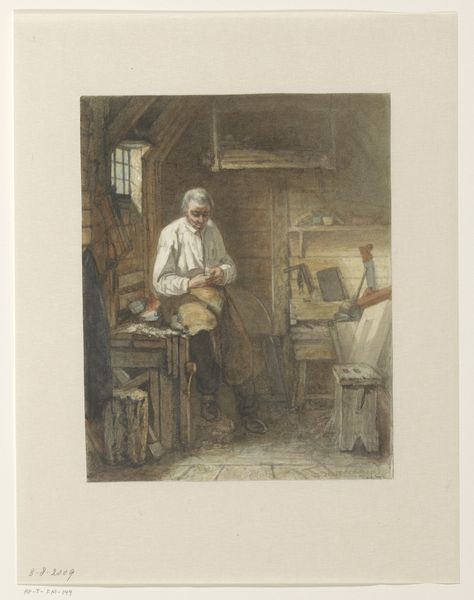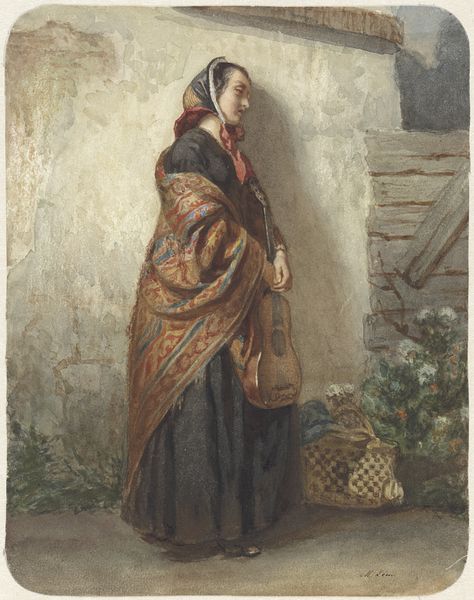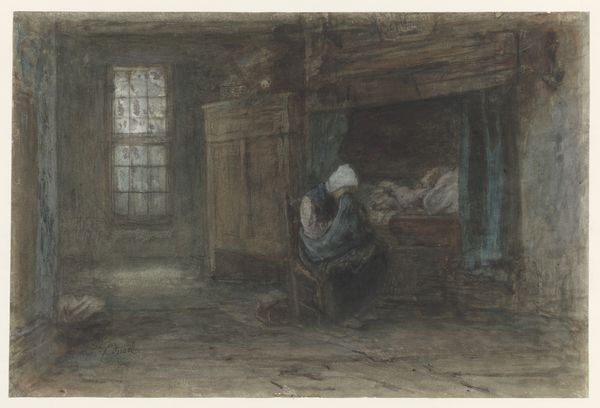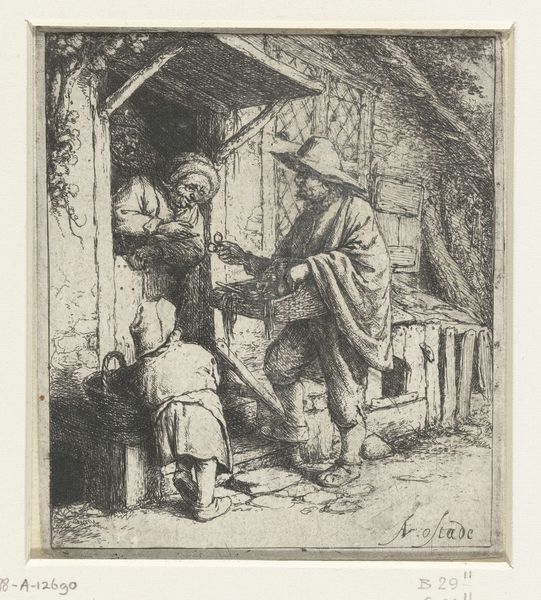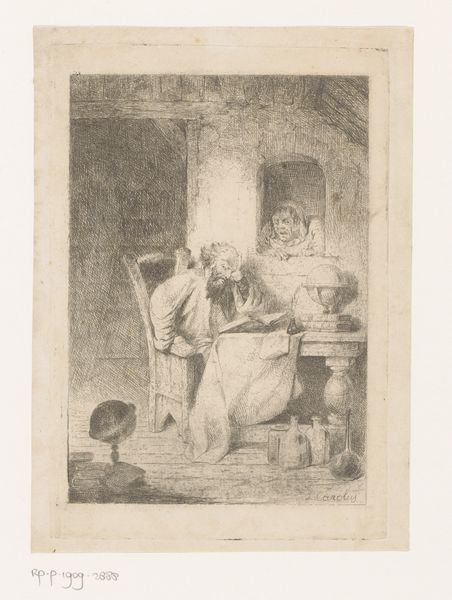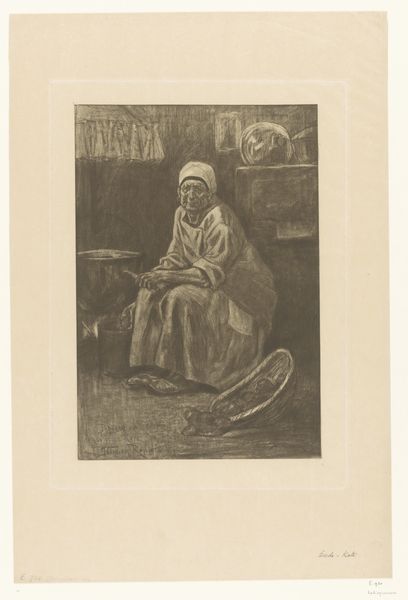
painting, watercolor
#
painting
#
impressionism
#
watercolor
#
genre-painting
#
watercolor
Dimensions: height 368 mm, width 273 mm
Copyright: Rijks Museum: Open Domain
Editor: This is Albert Neuhuys's "The Little Potato Peeler," painted in 1873 and made with watercolor. The subject seems to be isolated; what compositional choices do you think convey this? Curator: A primary observation would be the muted color palette. Notice how earth tones and muted blues create a somber, enclosed atmosphere. This immediately focuses attention on the figure through tonal consistency. Editor: How do you mean, exactly? Curator: Semiotically, color signifies. In this work, the consistent use of desaturated hues lacks vibrant contrast, conveying themes of the domestic sphere. Light catches only on the young girl, making the tile work act like leading lines. Editor: I can see that. It gives it this incredible sense of depth as it highlights her. Is there a meaning in that positioning? Curator: Yes. Observe the careful geometry: a clear balance in the shapes. Note that the right is very tile-heavy and contains the pale glow from outside; the shapes almost feel comforting, contrasting with the stark angles of the space to the left of the subject. What affective response do you derive from this strategic asymmetry? Editor: I suppose that draws more attention to the sitter since her presence has more visual interest than a single angle. I can also see how her round shape and forward direction in the frame emphasize the labor and time put into the potato peeling task. I appreciate how this work demonstrates the significance of small details that enrich the narrative. Curator: Precisely. Art invites continuous re-evaluation and the decoding of pictorial elements to achieve refined perception.
Comments
No comments
Be the first to comment and join the conversation on the ultimate creative platform.
